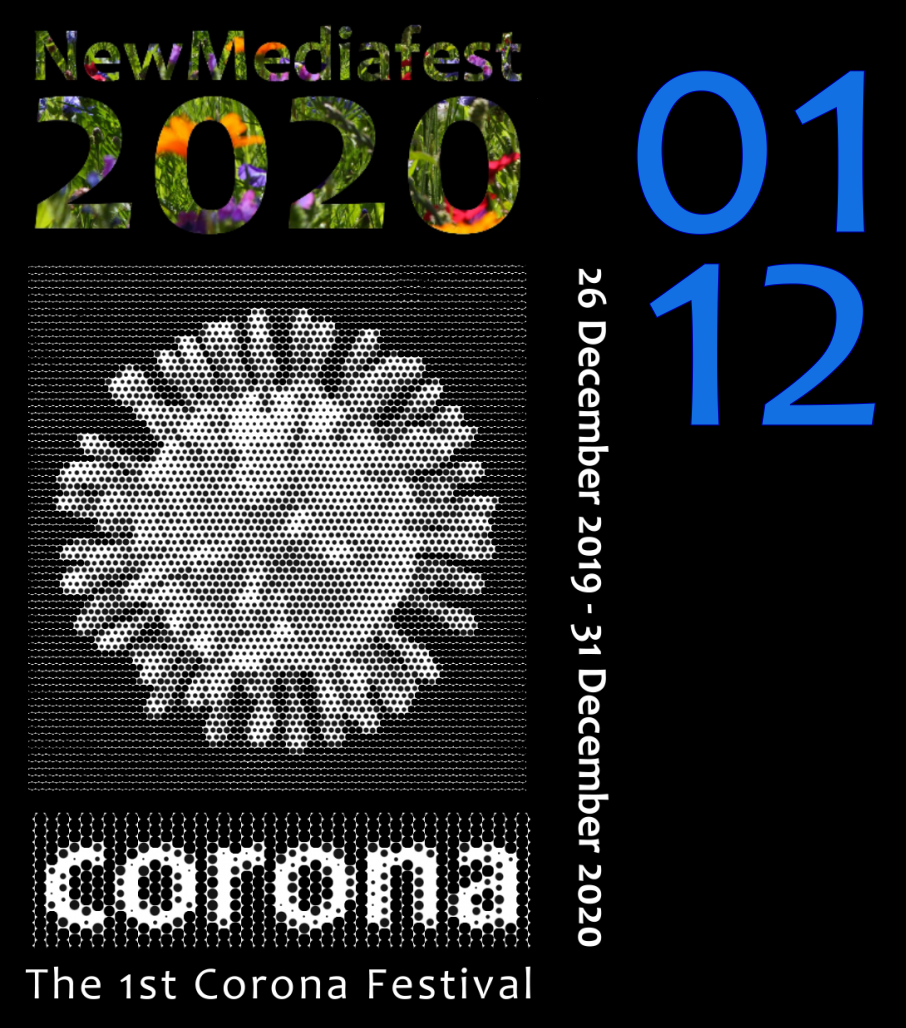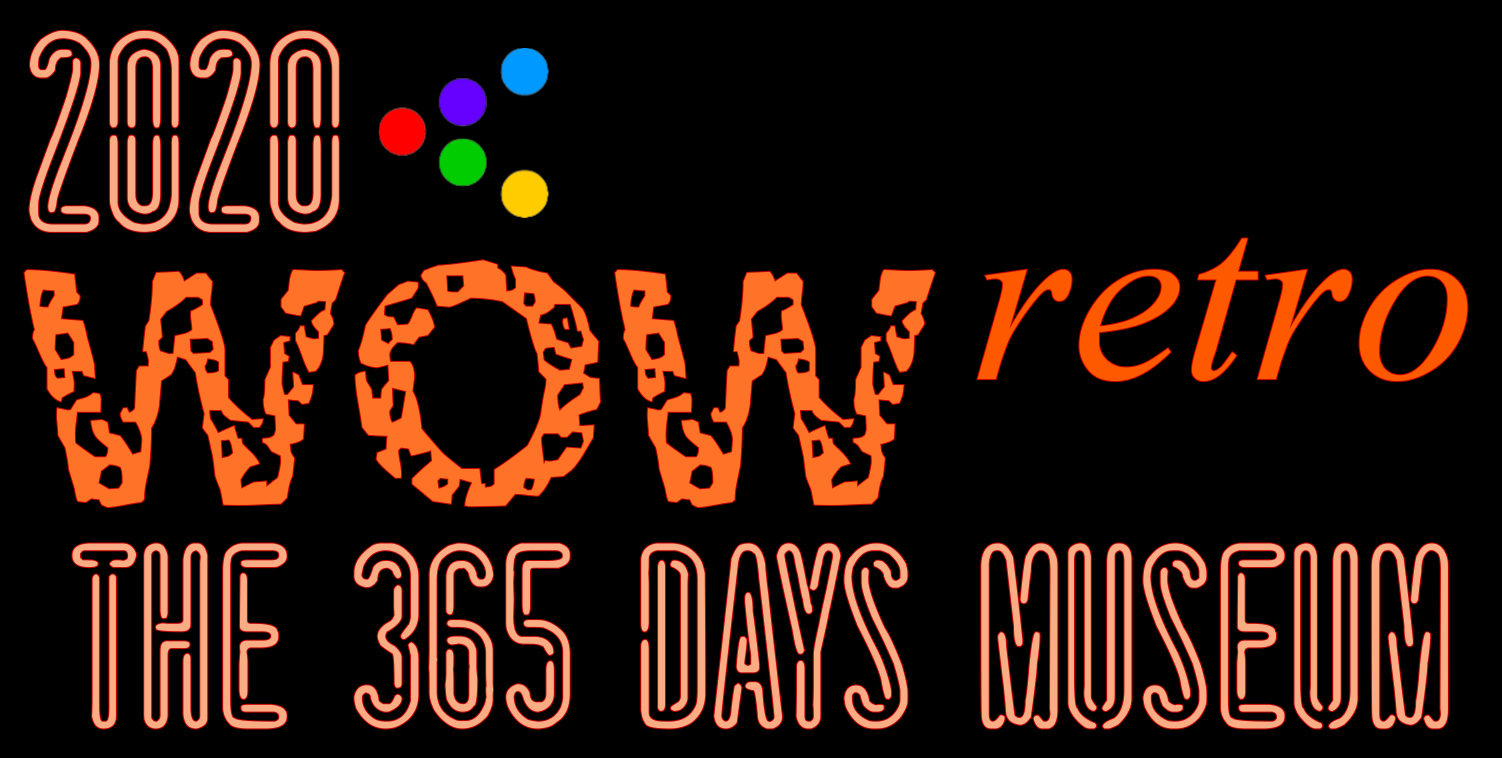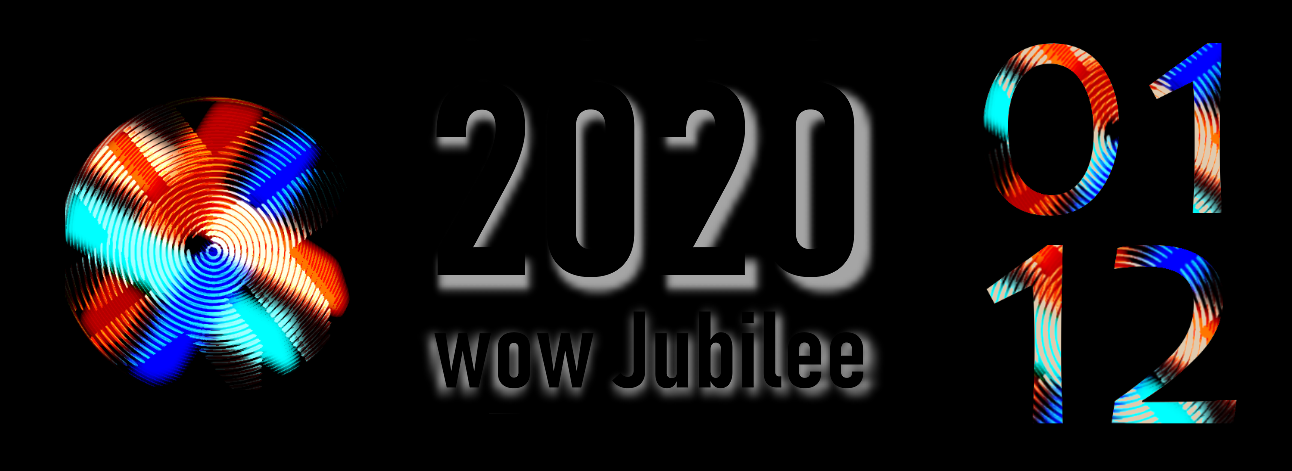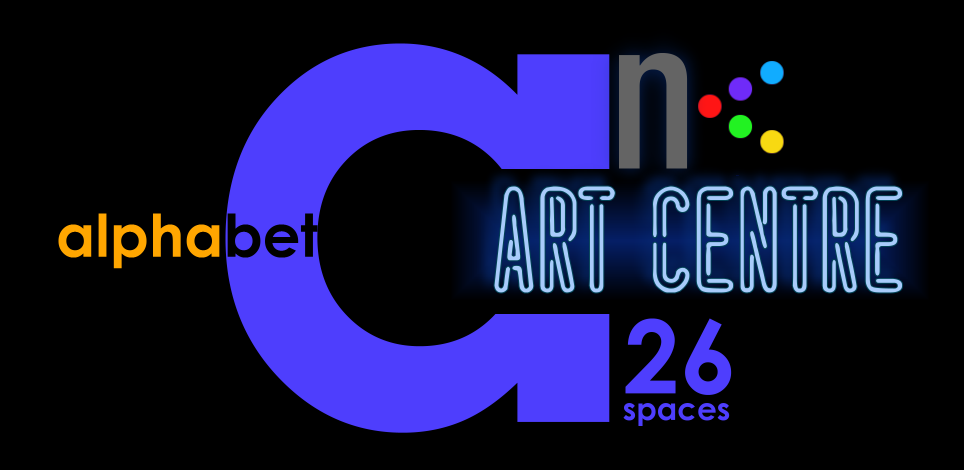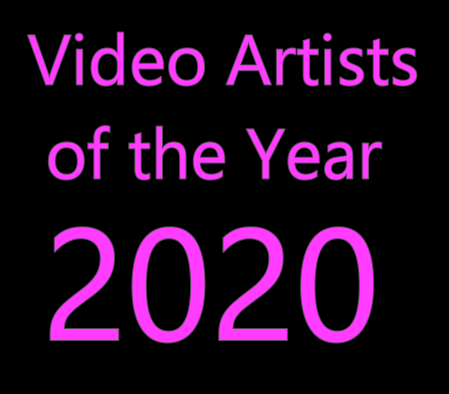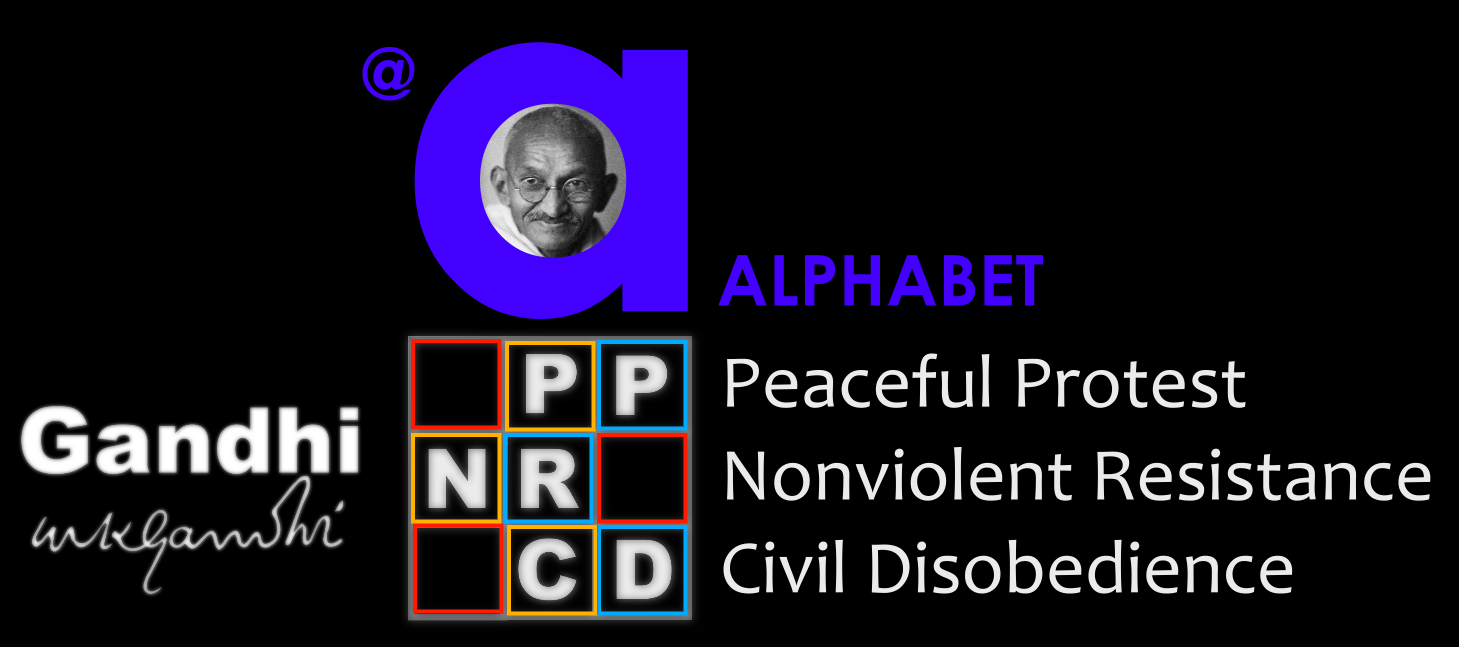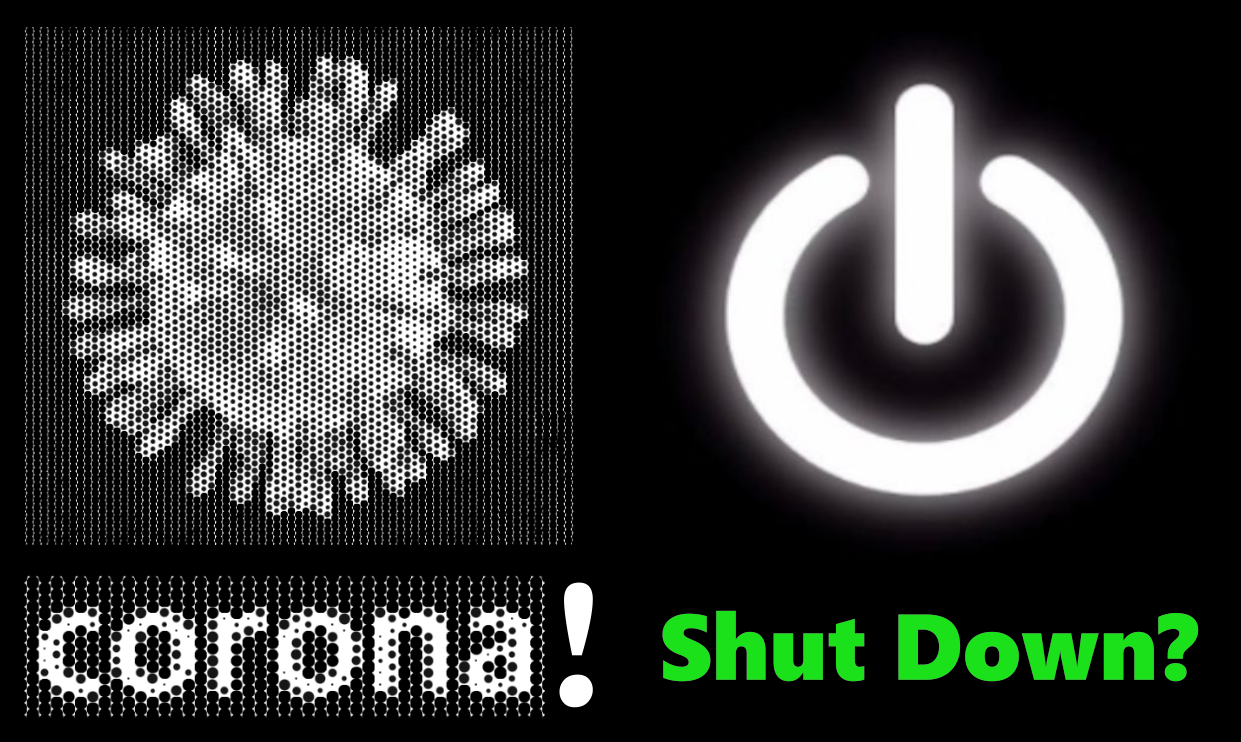video feature
Sao Paulo
FILE Electronic Art Festival
Hipersonica Festival
2007
Sao Paulo

13 August – 9 September 2007
FILE – Electronic Language Festival Sao Paulo/Brazil
FILE Hipersonic Festival Sao Paulo/Brazil
FILE – Electronic Language Festival belongs to those events Wilfried was most frequently participating in – between 2001 and 2009 – 9 times in FILE Sao Paulo, 6 times in FILE Rio de Janeiro, 1 time in FILE Curitiba and 4 times in FILE Hipersonica. In 2007, FILE Sao Paulo and FILE Hipersonica are taking place during August. While FILE is including one of Wilfried’s most recent audio-visual works – Bareback-seriaDIScharge, FILE Hipersonica is presenting “SoundLAB IV – Memoryscapes”, including in total 140 artists. Wilfried attended FILE just once in 2005, when FILE was taking place in November 2005 and Wilfried was participating in FILE Symposium during his tour through Latin America. A later article will honour FILE and its diverse manifestations more in detail.


FILE – Electronic Language Festival Sao Paulo/Brazil 13 August – 9 September 2007

The experimental film tells the story of a homeless person, who lost its identity in all the traumatic experiences it was undergoing. Again, Agricola de Cologne uses the form of the allegorical representation for pointing to essential questions of human existence. All people are homeless in on or the other way, most however, suffer from it without being aware of it. The film is a mirror of our time which has lost its roots.

SoundLAB IV – memoryscapes
“memoryscapes” consist of 12 unities – m’scapes which including in total more than 140 artists. Each m’scape represents another landscape carrying collective memory through sound compositions.
This article is featuring the 1st four m’scapes!

m’scape I
is featuring these artists
.
Isabel Arevalo (Spain)
Mira Burt-Wintonick (Canada)
Aniruddha Dutta (India)
Neil Kaczor (UK)
Alexander Kharkovsky (Russia)
Raphael Lyon (USA)
Mike McFerron (USA)
Ailis Ni Riain (Ireland)
Stefanos Pavlakis (Greece)
RijN – Walter van Rijn (Netherlands)
Malte Steiner (Gerrmany)
Eldad Tsabary (USA)
Title: “Frontera”
2005, 5 minutes
Where is the limit of the sound?. Where is the limit of being?. I´m searching a correspondence between the limits of sound and the human being. The line where all is too similar, the frontier of the same…
artist biography
.
Title: Muriel’s Message
2005, 6:28 min.
A box of old audio tapes dug up from the basement bring my
grandmother Muriel’s memory back to life.
artist biography
Interview for SIP – SoundLAB Interview project
.
Title: Drowning, recollected
2006, 4 min 24 sec
This piece demonstrates my interest in combining aleatory and pastiche techniques with electronic sounds and textures within a shifting, uncertain tonality. I have created an electronically generated background ‘noise’ that is disruptive yet patterned, which intersects with fluid chord senquences on synthesizer to create an intended sense of dissolution. What can one ‘recollect’ of drowning, that event of intense crisis as well as stasis, when one is precariously poised between the survival instinct and the lure of dissolution of all bodily boundaries? In the face of this impossibility, all I can do is single out moments – of crisis and intense anxiety, but also of melancholia and stasis. That is of course the privilege of memory – to aesthetise drowning as an event which is both the threatening erasure of the basic identity and separateness given through bodily boundaries, and the alluring escape from shackles of all social categories (one need only remember the lure of drowning in the works of Virginia Woolf, for instance.)
.artist biography
Interview for SIP – SoundLAB Interview project
Title: extract VIII – in the air suspended II
(2006), 05:01 minutes
In extract VIII – in the air suspended II (2006) fragments of musical material
and sounds drift in & out of perception – in the same way particles of dust waft
into view through occasional shafts of sunlight – growing in intensity until
gently subsiding. An evocation of vague memories, a reverie.
artist biography
Interview for SIP – SoundLAB Interview project
.
Titles: Mozart Strasse
2006, 4’35”
“Mozart Strasse”. The crucial way after the magic gates of “Zauberflote”.
2006, running time: 3’01”
“Granular Trio (Schubert. Sentimental waltz)”. All effects are produced by granular synthesis. There are three “melody” lines.
Title: Psicklops
2005, 63 minutes.
PSICKLOPS; A 64 minute “Dark Cinema” Hypno- Drama.
Psicklops (Pronounced Sick-Lops) is the worlds first audio-only experimental feature film.
Designed to be “screened,” Psicklops attempts to make a radical shift away from traditional sound narrative (Radio Drama/Theater) by using the semiotic vocabulary of cinema to build meaning and environments.
Proceeding through a complex series of interlocking stories Psicklops is best understood as a modern redux to Kafka¹s ³The Trial.² Circling the territory of interrogation, pointing to both of the capitalist and homeland security varieties- this dark cinema uses an amalgamation of carefully scripted material, guerilla recordings and experimental sound art. Psicklops
is a unique sound event that.is funny at times and frightening at others- but always disturbing and evocative.
Produced and Directed by Raphael Lyon with over two dozen artists. Hand made covers design by Jim Drain.
Title: “9.17.2003”
2004, 5:29
9.17.2003 grew out of the idea that one of the primary characteristics of art is that it compresses a large-scale topic into a manageable space, whether that space is physical or time-based. That is, artists begin with a large subject and reduce it to a manageable form. In music, composers address a number of subjects from memorials to rituals to the absolute. The one thing that unites music is that it almost inevitably at its roots comments on something larger than itself.
Whether it’s music, painting, sculpture, or drama, artists use the tool of conservation of means to make a grand comment. For this composition, I invited the Lewis University community to contribute to my orchestra of sounds. I placed a microphone in a busy hallway at Lewis University and recorded sounds for 24 continuous hours. Using the electronic music labs at Lewis University, I created a composition using only the sounds recorded during that 24 hour period. For me, this reflects the attitudes, emotions, and interactions of this day—a summary, or a composition that documents September 17, 2003 at Lewis University.
Title: StreetSong
2006, 4 mins 18 secs
StreetSong – a combination of Sean Nos (Traditional Irish Vocal Singing),
contemporary flute, children’s church choir and bells. Internal memories of
historic voices, floating through the old street of Dublin in song.
artist biography
Interview for SIP – SoundLAB Interview project
.
Title: “ A Sense Of Belonging”
2005, 4:54 min.
Centered on the belief that alienation is our “collective cultural debris” deriving from Modernity, I produce work exploring forms of geographical, cultural, or social displacement. In a series of ongoing audio-works I am engaging with language and place. In the context of an emerging “global village”, enabled through communication technologies and low-cost air-fares, the struggle to root oneself is represented through the effort to verbally express. “A sense of Belonging” is an exercise in memory and identity taking the form of a lesson in correct English pronunciation.
Title: “Pigment on Bark”
2005, 8:56 minutes
PIGMENT ON BARK – installation producing 2 voices describing a painting :
BRIDGIDI, Aboriginal bark – painting pigment on bark – 42 x 93 cm
Scanning the surface, describing the marks, exploring a culture and identity that uses storytelling and visual art to pass on their cultural history. The memory of the original story is passed on through many transformations and translocations in time and place.
From theYolngu tradition, Arnhemland, Northern Territory, Australia; to 1947-Bishop Otter Gallery Collection, University of Chichester U.K.; to 2005-conceptual artwork PIGMENT ON BARK; to today & now- a listener/viewer experiences it within the (DIGITAL) framework it is presented. I’m only providing a platform for another interaction.
artist biography
Interview for SIP – SoundLAB Interview project
.
Title: „ident“
2006 – 4.33
„ident“ exchanges the identity and characterization of different sounds and creates new
soundscapes with partly vocal charactristics although no voicerecordings where involved.
The original sounds are fieldrecordings of abused tincans but by the processing with the
acoustic programming environment pd (aka Pure Data), the sounds where changed
dramatical. The resulting soundpieces where finally put together to the composition „ident“.
Title: God is Good to Daddy
(2003); 5:36
In “God is Good to Daddy” I represent my own blurry childhood memories of my father Haim Sabari. Recollections of my dad’s daily activities, his favorite music, shreds of his poems, and emotionally-memorable moments are all put together in a flowing, fluid mixture of sound and color. The blending of these diverse elements results in a dream-like sequence that follows a
subconscious, free-association-type logic; elements of different nature are melted together through the use of acoustic mirrors, fading in and out, the shifting of effects from one element to another, and, inescapably, a generous amount of reverb. The dream-like sequence culminates in the most dominant of all reminiscences – my father’s untimely death at the age of 44.
artist biography
Interview for SIP – SoundLAB Interview project
m’scape II
is featuring these artists
.
audio_z aka Tautvydas Bajarkevicius (Lithuania)
ELICHEINFUNZIONE – Davide Fabbri (Italy)
Josh Goldman (USA)
Ronald J. Herrema (UK)
James Kelly (USA)
Savvy Krajcek (UK)
Tsui-Lun Liu (Taiwan)
Stefano Pasquini (Italy)
Michael Pounds (USA)
Debashis Sinha (Canada)
Jacqueline Then (Singapore)
Tetsuya Umeda (Japan)
.
Titles: leaving
(5:44, 2005)
‘leaving’ is a cinematic journey through imaginary urban soundscapes. transparent bright melancholy and nostalgia, embodied into massive melodic fluxion, vocal tunes, field recordings, aspires reminiscences of anonymic spaces. as if you were rising from the memory airport filled with sonic snippets of unrecognisable whispers, colourful shades of purified impressions. musically, “leaving” is a mixture of digital glitchy and organic sound, immersed into a melodic flow. published in the mp3 release “by way of conclusion”
2.
ambience of atmospheric sound and intimacy of voice, vast and rich amplitude of sonic nuanses. a childish song, as a main motive, disseminated in the streaming waves of echoes. published as a part of audio_z mp3 release [x]
3.
remixed vocal quotes from sonic film imagery, sinking into the rhythmic, multilayered and melodic passages. ecstatic music in an experimental manner. published as a part of audio_z mp3 release [x] artist biography
.
Titles: 1. Free The Combo (2006) 05:14
Free The Combo:
The starting synth loop start with a gliding bass line that supports all track till the end. This bass lines changes in variations and then comes a “free” overloaded keyboard that goes slowly into his solo, recorded before adding all drums. Also drums are “free”, that means they didn’t plays in a simply 4/4 tempo. I have think to a free jazz combo playing with a syncopate mood through my software and hardware. In the whole work of suite this part moves to an unquantized sound area, where tunes eard before acts a different and unfamiliar role.
Regular The End:
After the “opened” minutes of previous section comes a most straight zone that’s lead the suite to his end. Instruments are the same, but much less in fragment and on running regular flow. Also most of melodic and some rhythmic patterns plays themselves during all suites movements, but changing role and position (and identity) according to what happens around them.
Those tracks are two last part of “Suite n°3” in 5 movement. This suite’s story starts from “stuff to save” folder in my hard-disk, where little ideas find place waiting to be re.loaded on some music files. I open this folder when I don’t have any new idea, so I browse back this memory hoping this time would be possible work and finish a work completely. Such to give to this memories an identity.
artist biography
Interview for SIP – SoundLAB Interview project
.
Titles: 1. Language
(2003, 6 minutes, 27 seconds)
is a stereophonic sound structure composed for seven vocalists (none of whom are using their vocal cords). During playback (in complete darkness), the compact disc should be played as loud as possible, without causing damage to any speaker equipment, or anyone’s ears.
By Rote
(2005, 40 minutes)
is a 40 minute sound structure composed for a specific ensemble (electric guitar: performed by Josh Goldman, electric bass: performed by Bob Ross, percussion: performed by Michael Evans) and electroacoustic soundscape. The performance should take place in a planetarium (or other meditative space). The electroacoustic soundscape is heard continuously (with some exceptions). The ensemble performs 5 interjections during the electroacoustic soundscape.
artist biography
Interview for SIP – SoundLAB Interview project
.
Title: Habitation/hone, Sweet Home 2005, 12’06’
Habitation/Home, Sweet Home integrates recordings of automated telephony and of political speeches in an effort to shed some light on the algorithms of power. The first half, Habitation, takes the form of a set, telephonic “soundscape”, whilst the second, Home, Sweet Home, involves the use of my Max/MSP brassage patch to interactively trigger, sample and shape approximately seventy sound files, creating textures of up to 22 voices and ranging across various levels of intelligibility. This is a stereo version of what was originally an 8-channel work.
artist biography
.
Title: Birds playing in the snow 2005. 3.31
Birds playing in the snow was created from unused recordings, stored on back up CD’s and discarded Mini discs. The sound of a melancholic pianist improvising in a quiet room while thinking about birds in the snow, the laughter of a past girl friend captured on Mini disc or reversed guitar tones from an old cassette rediscovered and juxtaposed to create a collage of memories for the composer and a experience of timelessness for new ears.
Title: Newly Confused 2005, 7:56
Newly Confused is a memoryscape populated by various sonic ghosts from my own recordings made over the last 15 years or so. Layering a variety of tones and fragments from different periods the piece physically brings together snippets of recorded time and presents them in a new temporal context, with each sonic event bleeding into the next, forming new ambiguous associations and triggering new responses. I’ve attempted to create a sense of textural and chronological depth that allows the piece to progress not just from beginning to end along its duration, or from one successive ephemeral event to the next, but also backwards and forwards through layers of superimposed time.
Title: Good Torture 2006, 4:00
Voice Recording and digital sound editing
“Good Torture” is sorrow work. It consists of 4 text sound pieces, I hate her/I don’t hate her, Good Torture, No, Love Applause, which are fragments of memory and words of deeply repressed feelings. “Good Torture” is also reflection of the artist’s view on today’s world. I hate her/I don’t hate her is a counteraction of emotional correctness. Hatred is not positive, but “Wer nicht hassen kann, muss leiden.” (Those who can not hate have to suffer). Good Torture simulates 2 sounds; girl’s talking of different kind of tortures and woman’s hiss. The power to torture people in different methods lies on hands of those empowered. No is weak resistance. Love Applause shows a tiring event of cheerful applause.
Title: First Casio Song 2005, 2′ 28″
This song was made with a 80’s casio keyboard that I bought for my daughter Yumi. She also helped with the song, even though at the time she was only 11 months old. I was just trying to get a sound feeling about the time of the keyboard, without sounding too 80’s. Nothing too conceptual then.
.artist biography
Interview for SIP – SoundLAB Interview project
Titles: 1. Mixed Messages 2002, 10:00
“Mixed Messages” is a remixed version of a much longer composition entitled “Messages.”
The original composition was inspired by a collection of reel-to-reel tapes recorded
by my late father when I was a small child. As the piece took shape, it became an
exploration of the sounds of technology and the ways in which technology affects our
various forms of communication. On another level, the piece is about my father, whose
love of music and technology was certainly influential in my own choice of careers.
Some of the source recordings are from the World Soundscape Project Tape Library at
Simon Fraser University (Canada). The piece was begun at the University of Birmingham
(England) and completed in the Music Engineering Technology studios at Ball State
University (Indiana).
“Blowout (expanded)” began its life as a one-minute composition created for a
celebration of the 50th birthday of Jonty Harrison, the composer’s former teacher at
the University of Birmingham in England. This expanded version of the piece develops
ideas from the original composition along with new material to create a much longer
piece. Rather than the celebration of a birthday, this new piece can be considered a
celebration of the composer’s marriage and the completion of his doctoral degree.
Titles: 1. making gongs 3′ 01, 2001
making gongs is constructed using the sound of 5 men beating metal in a small gong factory in Solo City, Java. Gamelans are still constructed in this way, and the process of heating and striking in the act of creation is a deep and profound thread to where the metal will go. It is a record of an unbroken line of creation, using the same techniques used in the past and that will be used in time to come. This piece presents the process and the result, with resonances on many sonic and psychic levels.
the lying down man
it had been five years but he was in exactly the same place when I went looking for him that Christmas he is always there he doesn’t speak only lifts his head and keeps his two stumps for arms moving always moving and head up he never stops I can feel his exhaustion and each time I see him I give him all my change and even though I know the crook who puts him there every morning collects the money I can’t help but hope that maybe my few extra paisa will
make him easier on the lying down man I can still see him there on his belly in the sun and sometimes he comes unbidden into my thoughts I panic to think of him there in the heat with no shade no possibility of getting up to get some water from the pump or to eat or even relieve himself all day hammered by the heat and the exhaust from the cars on chowringee
and when I remember that I never ever even offered him water or a sliver of orange I feel like weeping And my heart becomes hollow
jaal mala (garland of water)
is a path through and along the Hoogly river in Kolkata, India, starting at Belur Math, the headquarters of the Ramakrishna Mission monastic order and a place very dear to my heart. The genesis of the piece came while watching my father descend the bathing steps to wash his feet in the water. Using the sounds of the riverbank, I went along and inward to finally come out washed clean on the other side, in the streets of Kolkata.
Title: The Singapore Homeworker 2005, 3:24
A Singaporean youth version of Madonna’s “American Life”, integrated with “The Song of the Homeworkers” from a literature textbook.
artist biography
.
Title: fan-band plays the Karaphone 2005, 40min.

m’scape III –
features following artists—>
Jim Barrett aka NaDa BaBa (Sweden)
Bronwen Casson (Ireland)
William Fowler Collins (USA)
Jared Dunne /Meloday (USA)
Satoshi FUKUSHIMA (Japan)
Olaf Hochherz (Germany)
Yuicho Ito (Japan)
Dario Lazzaretto (Italy)
Matthew Ostrowski (USA)
Neil Rose (UK)
Satellitic aka Paul Jamrozy (USA)
Jouni Tauriainen (Finland)
.
Title: Thursday Morning in London (Falluja Mix)
(2005), 8 mins.
This is a collage sound piece. The live recording was made the morning of Thursday, 7 July, 2005 in the forested north of Sweden (didgeridoo, drums, bells, synth samples). As I stopped working for lunch I turned on the TV and saw the pictures of the death in London. This directed me to include a commentary on this in the piece. It came from Ken Livingston, mayor of London responding to the attacks, as well as Joe Carr reporting from the siege of Falluja in Iraq. Both situations are spaces of urban terror and political and cultural violence. All samples are in the public domain.
.
artist biography
Interview for SIP – SoundLAB Interview project
Title: “No Man’s Land”
2005, 6 minutes 11 seconds
The Audio piece “No Man’s Land” documents a personal journey, both physical and metaphorical. It is concerned with “The little disturbances of man”: with the small incidents of daily life, with depression and with despair and the problem of identity in a disorientating world. It incorporates both voices from memory, and the voices of passing strangers. Set within the context of the urban environment, it has particular and symbolic reference to “The Bus Stop”, traffic and the motorway. This audio piece may be presented within the framework of an installation.
artist biography
Interview for SIP – SoundLAB Interview project
.
Titles: 1. Untitled Dream #1 2006, 5:00
2006, 5:00
With these 2 mixes I have combined raw field recordings made in varied geographical locations (a farm at night, a bus station, urban street noise) with both processed and unprocessed recordings of acoustic and lap steel guitars, drum machines, tambourine, and electronics (feedback from a 7 watt amplifier and sounds created with SuperCollider 2 audio synthesis
software) to create transient, dream-like pieces.
artist biography
Interview for SIP – SoundLAB Interview project
.
Titles: 1. Circle in Space
This is a piece that I did for my Electronic Arts class. For the assignment we were provided a video clip from the film 2001: A Space Odyssey. We then had to compose to picture a Music Concrete piece. I’ve never before approached a piece with the sound design ethos in mind. Working in such a way forced to me think outside the formulaic compositional box. My original plan was to take six or seven natural samples, run them through a Granular module, then, once in Logic, arrange and apply the automation to each track. As I began working on the first audio track, I became intrigued with the sounds that I was getting from that single track by simply applying three effects: EQ, delay and reverb. I enjoyed the results so much that I made the decision to use the single audio track, instead of importing the other six. There were points throughout the piece when I felt the need to use another track to vary the sound. I fought the urge. This made the process more challenging but, in the end, more rewarding.
For this spectral composition I used only one sample for the entire harmonic composition. I started by building a patch with Vaz Modular synthesizer. The patch is built around a granular oscillator. I then inserted a vowel filter and a wave-shaper to affect the output of the granulator oscillator. I inserted two temp-lfos into the signal chain. I routed the tempo-lfos to the vowel filters resonance and morph-modulation parameters, respectively. The morph-modulation affects the morphing time between the vowel consonance of the filter. The output of the vowel filter and the wave-shaper is sent to the mixer.
Of all the minimalist techniques, the one that interests me most is the idea of phasing. In the vein of Steve Reich’s ‘Come Out’, this composition attempts to explore the changes that occur when a single sound phrase falls in and out of rhythmical unison, and how that sound transforms from identifiable to unrecognizable. Melodically, I wrote a very simple line with my multi-sampled flute instrument, which was mapped into a sampler within FL Studio. Then, over the course of the piece, I added and subtracted notes from that line with the hopes that the change would be gradual.
For this minimalist composition, I used two sounds:
1) The splash sound of something being dropped into water.
2) My multi-sampled flute instrument
.
Title: vocalise for the outer layer” 2006, [2:56] ” vocalise for the outer layer ” is a reshaped version of the past piece,”vocalise for six channels”(2005-2006). “vocalise..” series are composed of a one Soprano voice(sound file) and 6 channel switching system & Granular Synthesis on Max/MSP. ” vocalise for the outer layer ” was also made by cutting up the past one.
short bio: Satoshi FUKUSHIMA, a composer, was born in Niigata, Japan in 1977. He studied music and programming at Institute of Advanced Media Arts and Sciences (IAMAS, 2002-2004). And he is a member of the “mimiz”. It is a free session group using a Digital and Analog noise.
He has composed some works in live electronic music from 2002. His works include: ” compass ” (2005- ), which serises are played pianica on a using a real time algorithmic system; ” vocalise for six speakers “(2005-2006), which is played by a computer using a high-speed audio-channel switching system and six speakers.
[prize]ARS ELECTRONICA 2006 Digital Music Honorary Mention (as mimiz)
artist biography
Interview for SIP – SoundLAB Interview project
.
Title: warum prozess (2005) 15:43
why progress? the piece is made out of approximately 44 layers, each includes between one and twenty morsel. each morsel is between 0.5 an 14 seconds long. there are approximately 400 morsels. the piece begins with the morsel having the lowest averaged energy and ends with the morsel having the hightest averaged energy. i think there is only one problem.
how does it look like when the community of the morsel is a undefined unknoted slited flick. is an embodiment always a directed gathering? here are the morsel organised in a direktion without an aim, without identifing and verifing the aim. is there meaning without embodiment and delineation of an aim? when there is shape, isn’t this totalitarian? anyhow there is something folded cut in this one creschendo.
Titles: 1 .”Printer, Paper Cut and My Cough”
(2005) 3:46
Operation sound of printer, sound in which paper is cut with knife and coughing sound of me recorded by chance that was sampled. These sounds are the sounds of the work when I produce CD for the first time. The printer is a sound in which the jacket is printed, it is cut with the paper knife. And, my coughing sound. Memory of work and my existence.
Japanese “KITA” is sampled. The meaning of “KITA” is “Come”. I think, the sound seems to be denied because of the noise that is I feel like getting drunk. I must get drunk exactly.
artist biography
.
Title: Lady Larsen 2004, 2’22”
I made “Lady Larsen” with Larsen effect (the whistle produced putting a mic near a speaker). Standing in a large room with four speaker at the corners, putting echo and multitap delay effects on the mic, holding the mic (fixed with tape) at the chest, I immagined to dance with a real woman, and tried to feel her invisible feelings traduced in music. It have been like playing a performance unseen by anyone and recording is a way to keep a memory of tenmeeting with my immaginary lover.
artist biography
Interview for SIP – SoundLAB Interview project
.
Title: I hear (2006) 5’42”
This piece uses texts from Leaves of Grass and product descriptions gleaned from online clothing and furniture catalogs. , all of which is spoken by computer-generated voices. Whitman’s imagery of industry and activity valorizes labor as delight and self-expression, and energetically brings a world of fulfilled and happy artisans to the mind’s eye. The catalog items evoke the modern reality of postindustrial capitalism, in which the overdetermined and bizarrely sensual descriptions of products (theoretically the end results of Whitmanesque labor) elevates consumption over production as the source of self-recognition and understanding.
.
artist biography
Interview for SIP – SoundLAB Interview project
Title: Nil By Mouth 2006, 6:13,
Memories of childhood experiences affirm and fix our identity, a significant event in my early life makes me the person I am today…
artist biography
Interview for SIP – SoundLAB Interview project
.
Titles: 1. Global Horn Cacophonia 1 (2006) 11.17
Transient Memories /The trans border properties of sonic delivery
.
Am I walking 2. Problem 2006, 3:15
One night I couldn’t sleep and realized that I was listening my alarm clock ticking. It was very annoying. So I decided to do something with it. Time is running and everything just keeps going no matter what you do. And there’s no better sound to describe that than a ticking clock. Quite a cliché but that’s the way it is. So I recorded that annoying clock and made a marching beat from it. Then I found this audio clip where a woman is counting and added it into the beat. I also recorded street ambience putting a microphone into a big glass bottle. In the end there is just a little electronic piano.
I used shure sm58 to record the whole thing into my Boss hard drive recorder.
I also used Boss sp-505 sampler and a small electric piano.
The end result is quite anxious but still funny. Or at least I think so. Even if the ticking clock is very used and cliché Problem sounds fresh and interesting. A trip that makes you think every second and what you are doing with them. And is your time really yours….

.
m’scape IV – is featuring these artists—>
.
Leandro Barzabal (Argentina)
David Chesworth / Sonja Leber (USA)
Kyong Mee Choi (S.Korea)
Linda Rae Dornan (Canada)
Heloisa Escudero (Brazil/USA)
Jeremy Hight (USA)
Mikhail Karikis (UK)
Al Larsen (USA)
Le Lavatrici Rosse (Italy)
Rie Nakajima (Japan)
Khaled Sabsabi (Australia)
tarofonika – aka Rick Foot (USA)
.
Titles: 1. 00´2006, 5:18
as I grew farther on developing a sound that remained in my head for several days, I encountered the difficulty of pasting it to a certain surface. First voice came to assist, broadcasting a basic signal through my vocal cords, soft palate and lisping. Voice became the prime tool to make sound tangible, coming out of a memory of an old idea.
Sculpting this raw sound was the next step. Re-recording the original sound, thinking of the hidden meaning and background minimalistic melodies of the original recording. When that was achieved, I found myself reconstructing a visual image of that memory and translating this to a sound sculpture, using pieces of the sounds previously processed. The sculpture is “00”. The memory is a walk, going to someones’s house, who wasn’t there.
the piece was made out of phonographies taken during a short trip to the beach last summer. Eventually, this became the only memory I’ve got on those days. “pesado” fue el momento en el cual este recuerco toma partido. Wish I had recorded more memories.
.artist biography
Titles: 1: 5000 Calls 4:18
5000 Calls is a large-scale multi-channel sound installation installed throughout the Urban Forest, an extensive 4.5 hectare loose grid of eucalyptus trees surrounding the Stadium Australia in Sydney. The ever-changing soundscape utilises 5000 ‘charged’ human vocalisations
uncovered from everyday life: the sighs, gasps and groans of work, pleasure, sport, song and struggle. 5000 Calls particularly utilises the vocalisations of people in extreme physical states.
The ‘sense’ of speech has been removed from these everyday recordings to reveal a sonic trace. A memory of ‘human effort’.
Commissioned by the Sydney Olympic Park Public Art Program to be part of the permanent built environment, it can be heard daily during daylight hours.
Proximities: local histories/global entanglements is a soundscape conceived as a sonic corridor of human voices. The project is built up around recordings made by the artists of people from the 53 Commonwealth nations who are now living in Australia.
Each individual voice contributes a distinctive singing style with specific melodic and rhythmic ornamentation shaped over centuries of cultural tradition. Each singer sings from memory, songs learned from their country of origin. The work was created to show that it is not easy to represent an Australian identity. That national identity is defined by difference rather than
homogeneity. Memory and identity are therefore major themes of this work. The artwork can be seen as an imagined crowd system through which actual crowds of pedestrians pass for a time between destinations.
Titles: 1. Photogene (2005) – Duration: 7′
As its title suggests, Photogene is based on the interpretation of the visual phenomenon of ‘afterimage’ in the sonic world. Subtle and soft sound sections intermittently evoke the sense of an afterimage. The beginning is loud and dramatic, representing corporeal manifestation. Soft, flute-oriented sound comes later, implying unresolved, vague, ambiguous, even imaginative world. Through the dialog of two worlds, the piece intends to depict a constant flux in the manifestation and mystery of life.
This piece is inspired by the image of a tranquil pond at dawn. It starts with mystic and hazy scenery of the pond represented by a relatively wet sound. Gradually, dry and more transparent sonic material is introduced. While the essence of the piece, tranquility, is presented, subtle tension is still achieved through dynamics and articulations of sonic gestures. The majority of sound samples are processed by CLM (Common Lisp Music); utilizing instruments such as expandn, grani, expsrc, ring-modulate, vkey, fullmix, and nrev.lisp.
‘Onomatopoeia’ is words that imitate sounds and ‘mimesis’ is words that imitate gestures. As the title suggests, the material that is formed by imitating sounds is transformed into sound that imitates the gestures. Four different sections gradually unfold with quiet bird-like sounds, increasing wedge, strong attack, and a decreasing wedge gesture along with a different type of organ sound that is processed in a variety of ways. This piece is the composer’s poetic interpretation, subtly presented, of the relationship between Messiaen and the bird sounds that he loved.
Title: 1.Do You Remember? Marshwalk 2004, 3:13 minutes
A conversation between a couple where one partner, the man, has dementia. The soundtrack also plays recordings from several years of the man’s singing as his abilities to communicate deteriorate and yet, he still remembers to sing.
A woman’s mythological struggle to reach outside of herself.
The daily routine of an unusual woman who walks the periphery of her hometown, counting and documenting every detail which attracts her attention.
Titles: Bending Conversation 2005, Running time: 2:20
Bending musical notes to create a melody representing the constant distortion our memory trying to create/feed our urge to gain comprehation of especific verbal interaction with over humans. The goal of comprehation is achieved but without any truth. The brain is working unconciously with your memory to minimazi suffering. All you are left with is a sweet and sad melody of a Bending Conversation.
Title: Scan Loop Symmetry 2006, run time:1:00
This piece was composed to the shifts and patterns in a brain scan film. The project was composed for the Digital Museum of Modern Art. The corrolation can be made in sound patterns and interlocking of forms to the mind and its forms and sttructures. Memory essentially is lightning in this fleshy mazy and sound as composed electronically is essentially the analog to this.
artist biography
Interview for SIP – SoundLAB Interview project
.
Titles: 1.‘Untitled in CoF Minor’ 2005, 4mins 12secs
‘Untitled in CoF Minor’ is sound work for voice, two violins, two harpsichords, cello and electronics. A central concern in this work is the question: how does one communicate without being able to? The vocalist of the work is a character who suddenly realizes that he has lost/forgotten language. He begins with a loud cry of panic and explores different ways of voicing in order to communicate. Finally, out of this limitation (the lack of language), he discovers expressive possibilities in vocal ‘accidents’, doubtful notes, unrefined breaks between his vocal registers, the popping of his lips, clicks, knots, scratches, grunts, growls and his breath. This work is divided into four parts: the opening, where the various instruments are introduced sequentially; the following part in which an electronic beat lies under the melodic section of the work and drives it forward; the main part where voice acquires a central role; the coda in which the vocal improvisations lead to a climax and the finale of the piece.
‘Love Song’ is inspired by Beckett’s one-minute-long stage work ‘Breath’. It is an experimental sound-work that uses a single voice, which produces sound in an ‘inverted’ way, i.e. voicing during inhalation rather than exhalation. Due to the ‘inverted’ manner of voice-production the voice is distorted and unrecognisable. The composition starts with the sound of exhaling; then a voice is heard repeating a phrase that means ‘I love you’ in Greek, until the lungs of the performer are physically completely filled with air, and he begins to cough and choke. In the recording, all the ‘takes’ are overlaid as they were performed until no further vocalisations were physically possible at that point. Thus on one level, the piece engages with the over-familiar theme of the ‘love song’ and responds to it with ‘emotional honesty’ and ‘obsessive persistence’ unmediated by harmonic rules. On another level, ‘Love Song’ explores the evocative and material power of voice, and it tests the limits of the performer’s throat and his endurance.
Work Statement
Mikhail Karikis’ practice encompasses composition, music performance, film, drawing and installation; it is dedicated to the development and performance of innovative music and the exploration of auditory culture. In his work, he combines scientific experimentation with mythological themes. He employs traditional vocalizations and extended vocal techniques, which fragment language and distort the voice, to explore the poetics of voice, the power of unvoiced oppression and the difficulty to speak of it.
artist biography
Interview for SIP – SoundLAB Interview project
.
Title: “The Crow Harasses the Hawk”
Can you record a spoken word album without a microphone? If so, would it be music? You can sequence sound clips and make them go “boom, bip, boom-bip.” You can take the mic and go, “the boom, the bip, the boom-bip” (Push It Along). So the door between poetry and a drum track is definitely open. Beat poets and beat-boxers have been crossing that threshhold for awhile. Kurt Schwitters may have left that door unlocked.
But in the cut and paste era what’s a performance anyway? I saw Camille Paloque-Berges read her myspace comments the other night and that was pretty good. Performative typing taken into performance poetry vocal-space. Justin Katko combs active duty military message boards and recombines the vernacular through multiple voices funnelled through his own performing throat. Yes. Now let’s throw it backwards: Funnel our poetry back through some unwieldly and half-baked consumer software machine logic. “The Crow Harasses the Hawk” is part of an ongoing attempt to confuse syllables with beats, machine-voice with spoken word,
text with score, and to question the intentionality we project onto our environment through our use of language.
artist biography
Interview for SIP – SoundLAB Interview project
.
Title: Hey man, so cool 2005, 6’08’’
research, exploration, re-elaborationand creation of the sonic world in its own whole, that of the instruments and the one that surrounds us and interacts with our existence. Rediscover the primary qualities of sound and the means that allow its birth and development, a route towrd deconstruction of traditional aesthetical canons and a stimulus to an intelligent listening. The use of technology as a mean to overcome the “limits” of the primary instruments meets with improvisation, a visceral and unrepeatable act. The italian popular music meets the electronics.
The tune “hey man, so cool” is divided in two parts; the first, with a lot of overdubbed voices on the first riff in a 15/8 rhythm, it represent something complex that, with the increasing of his structure, become instead a powerful cell, a passion push to life.
The second part it represents the reality; it began with something like “going in a nightmare”, till the expression “hey man, so cool” and the beginning of the second riff. “Hey man so cool” is an ironic vision of the reality and also is taken like a typical expression of the contemporary awareness less man. Than the music become hard and dirty, screaming voices are the suffering society, there is fear for the breaking point of balance. This song is the sound-materialize of a conflict in-act.
.artist biography
Interview for SIP – SoundLAB Interview project
Title: 17mobiles ringing tones 140017032006 2006, [1:00] The work 17mobiles ringing tones 140017032006 is a 1 minute sound performance which was held inside of the Slade School building in London. The date was 17th of March, 2006, the time duration was between 14:00-14:01 in the afternoon. 34 participants were involved. 17 people made a circle and were waiting for receiving the phone calls from Japan, Germany, Czech, England and China. They have never met each other. Nobody knows to whom they were calling and from whom they were receiving the calls. Nobody was allowed to answer the phone there. I was interested in how people associate with the sounds of their own mobile ring tones at that time. They seem very intimate and personal to us even we choose boring nokia ring tone. As they are messengers who tell you that here is somebody who wants to talk to you. They can be almost fictional to us. By making all mobiles ringing at the same time by my friends and family calls, I intended to detach the mobile ring tones and their owners and unite their different fictional sounds under ‘my’ fiction without using my mobile.
artist biography
Interview for SIP – SoundLAB Interview project
.
Title: Casula live 2004 2004., 3 min 28 sec
This work represents time, people and place in relation to the question of survival and identity. Each is interconnected with the “other”.
artist biography
Interview for SIP – SoundLAB Interview project
.
Title: a phenomenology of identity 2006 2m57s
this was originally conceived as a live performance piece using a strip of magnetic tape bowed across a tapehead to record and play back the speech of the performer. reworked for this submission, it consists of four statements about the nature of the self, layered against a spurious narrative : a backing comprised of manipulations of the statements themselves and a processed double bass part. the central thread comes from the opening statement :
“the self is a fiction designed to account for the delusion that our lives have a narrative”
the episodic & fragmented continuum that follows serves to illustrate this delusion.
all sound manipulation was done using a delay line granulator patch in audiomulch; text, voice, bass and processing all provided by the composer.
.





